Life insurance, a powerful tool in personal financial management, often creates debate over its status as an asset. I’ve had countless clients ask me this question, and honestly, the answer isn’t as simple as a yes or no.
This article dives into what makes something an asset or liability as we search for the truth about life insurance’s place in your financial portfolio. Generally speaking, an “asset” enhances your financial status, but whether life insurance fits this definition really depends on the type of policy you have.
Let’s shed some light on the nuances between term and permanent life insurance (especially whole life insurance) and examine their potential roles as assets. My goal here is to thoroughly answer whether life insurance constitutes a personal asset or liability – and trust me, the answer might surprise you.
Table of Contents
- Key Takeaways
- Is Life Insurance an Asset?
- Understanding Assets and Liabilities
- What Counts as an Asset?
- Is Insurance an Asset?
- Life Insurance is an Asset
- Life Insurance as an Asset Class
- BOLI & COLI
- Life Insurance as an Asset Exceptions
- FAQs
- Conclusion
Key Takeaways
-
- Permanent life insurance, such as whole life insurance, qualifies as an asset due to cash value accumulation.
- Term life insurance is not an asset because it lacks cash value and only lasts for a specified term.
- Assets are items of value that contribute positively to your finances (in other words, assets put money into your pocket).
- The life insurance cash value can be accessed via loans or withdrawals, providing financial flexibility.
- Whole life insurance’s guaranteed cash value growth offers a stable, non-correlated asset, providing a hedge against market risk and volatility.
- While not an asset, term life insurance is essential for short-term financial protection and peace of mind.
- The cash value component in life insurance grows tax-deferred, offering additional tax benefits.
- Cash value life insurance is a strategic tool for wealth building and personal finance beyond just its death benefit.
Is Life Insurance an Asset?
TLDR: Spoiler Alert. Yes, permanent life insurance is an asset. In fact, dividend paying whole life insurance can be an excellent non correlated asset providing a fantastic hedge against market risk.
But, before we get too far ahead of ourselves, it’s important that we first define what an asset is and then see how life insurance fits into the category of an asset.
Understanding Assets vs. Liabilities
Robert Kiyosaki, author of Rich Dad, Poor Dad, has a simple way of defining assets and liabilities. According to Kiyosaki, an asset is something that puts money into your pocket and a liability is something that takes money out of your pocket.
An example he offers is your primary residence. Unlike investment real estate property that typically provides cash flow income (i.e. cash in your pocket) to you in the form of rent, depreciation, amortization, and equity growth, your primary residence takes cash out of your pocket in the form of your mortgage payments. Therefore, your home is not an asset.
What Counts as an Asset?
An asset adds value to a person or business (puts money into your pocket). Look, there are two main types of assets, tangible and intangible.
- Tangible assets are those that can be touched – the physical stuff.
- Intangible assets are those that cannot be touched – think intellectual property.
We can further breakdown assets into the following categories:
- Financial Assets Vs Real Assets: Another way to look at assets are by separating them into financial assets such as cash, bonds, stocks, and Bitcoin and real assets such as real estate, commodities (oil, gold, silver), and collectibles.
- Liquidity: Another characteristic of an asset is liquidity. Assets can be liquid or illiquid. For example, publicly traded stock is liquid, whereas private equity in a business is illiquid.
- Appreciating/Depreciating: Additionally, some assets are appreciating and others are depreciating. For example, real estate typically appreciates, but in an economic downturn it may depreciate. Your car would probably not be an asset, unless it’s a classic, because its value depreciates over time and it doesn’t put money into your pocket.
- Cash Flow: Some assets are sought after because they create cash flow. Real estate is probably the first example that comes to mind but another cash flowing asset would be high cash value whole life insurance.
So, let’s take a look at some assets. For our purposes here we’ll separate assets into tangible and intangible assets.
Some examples of tangible assets
- Real estate (such as buildings and land)
- Precious metals (such as gold, silver, copper and platinum)
- Commodities (e.g. electricity, oil and natural gas)
- Mutual Funds
- Stocks
- Bitcoin
- Bonds
- Money Market Accounts
- Certificates of Deposit or CDs
- Cash
- Annuities
- Equipment
- Inventory
- Cash value life insurance
Some examples of intangible assets:
- Patents
- Copyrights
- Trademarks
- Use rights – land, air, water
- Buy-Sell Agreements
- Domain Names
- Goodwill
Some examples of liabilities (i.e. things that take money out of your pocket)
These are liabilities because they tend to decrease in value over time and detract from a wealth building plan.
- Loans (Mortgage on your primary residence, Auto Loans, Student Loans)
- Automobiles
- Credit Cards
- Jewelry (Unless the jewelry appreciates due to what is is made from)
- Recreational Vehicles
- Boats
- Furniture
Perhaps the best way to look at insurance is neither an asset or a liability, but rather a risk reducer, since it is meant to protect your assets from loss and harm.
Typically when we think of insurance we think of expenses. Insurance coverage premiums, such as home, auto, health or liability, take money out of our pocket. Therefore, under our definition above, these types of insurance would be a liability, unless of course the insurance pays out.
And that’s the interesting thing about insurance (other than cash value life). If you have an insurance policy and it pays out a claim, then perhaps the insurance is an asset, or at the very least it converts into an asset.
Just last week, I was working with a client who had suffered major water damage to their home. Their homeowner’s insurance definitely transformed from a monthly expense to a major financial lifesaver overnight – showing how traditional insurance can flip from liability to asset when disaster strikes.
THE ULTIMATE FREE DOWNLOAD
The Self Banking Blueprint
A Modern Approach To The Infinite Banking Concept
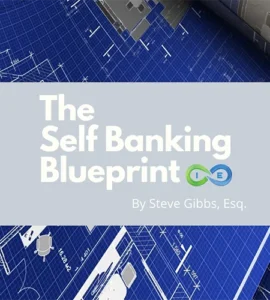
Life Insurance is an Asset
Whether or not we define life insurance as an asset will depend on what type of policy we’re talking about. This is where things get interesting – cash value life insurance is an asset but term life is not.
Term life is not an asset.
Term life insurance would be defined as a “pure” insurance policy that pays out a death benefit, but has no cash value accumulation, so it’s not an asset, but the policy can be converted to an asset for your beneficiary when you die, via the death benefit. So term life is similar to other types of insurance that is a liability unless it pays out, at which time it converts into an asset (cash). Despite this, its role in offering immediate financial stability and comfort is significant.
Contrast term life with permanent life insurance.
Since permanent coverage builds cash value, cash value life insurance is an asset that can be designed to increase in value, (both your cash value and death benefit), over time.
Honestly, this is one of the most underappreciated aspects of permanent life insurance – it’s not just about the death benefit. When I work with clients, I notice many are surprised to learn how the cash value component can function as a living benefit that grows over time, often at rates that outperform traditional savings vehicles.
This means that…
- Term Life Insurance is NOT an asset,
- Whole Life Insurance is an asset,
- Universal Life Insurance is an asset,
- Indexed Universal Life insurance is an asset, and
- Variable Life insurance is an asset.
Asset based long term care insurance.
There’s also a product called asset based long term care insurance. Why is it called “asset based?” It’s called asset based long term care insurance because the LTC coverage is attached to cash value life insurance, once again demonstrating that cash value life insurance is an asset.
Need further evidence that life insurance is an asset? Let’s take a look at banks and corporations.
Life Insurance as an Asset Class
With cash value life insurance you get the following benefits.
- Tax Free Death Benefit
- Tax Deferred Cash Value Growth
- Tax Free Policy Loans
- Creditor Protection (In Most States)
- Non-correlated Asset Performance
Let’s break down each of these benefits of life insurance below.
Tax Free Death Benefit
Life insurance is not taxable if paid directly to a beneficiary. This is important because it means your beneficiary receives the entire death benefit income tax free.
A couple exceptions would be if the death benefit causes your estate to exceed the federal estate tax exemption limit or your beneficiary is your estate and your assets are not in a living trust.
Tax Deferred Cash Value Growth
Whole life insurance is an asset in which the cash value grows tax deferred. A properly structured whole life policy offers guaranteed cash value growth and you may never be taxed on the growth of your cash value if you utilize policy loans.
Based on recent data from major insurance companies, cash value policies from top carriers have been averaging 4-5% annual returns – outperforming many corporate bonds while maintaining significantly lower volatility. This makes them particularly valuable during market turbulence.
Tax Free Policy Loans
When you take out a life insurance loan, you’re borrowing money from the insurance company’s general account, using your cash value as collateral. Under the Internal Revenue Code, a policy loan is not considered income and is not subject to income tax.
Here’s the thing – this creates a remarkable financial tool that few other assets can match. In a recent client situation, we were able to access significant capital for a business opportunity without triggering taxable events or impacting their adjusted gross income for Medicare premium calculations.
Life Insurance Asset Protection
Another aspect of cash value life insurance is the asset protection it provides. Most states offer some type of creditor protection for life insurance. That means your cash value in your policy may be protected from creditors and judgments.
BOLI and COLI
Banks and Corporations have balance sheets that list cash value life insurance as an asset. Let’s take at look at both banks and corporations.
BOLI-Bank Owned Life Insurance
Bank owned life insurance (BOLI) is a policy where the bank is the owner and often the beneficiary and the employee is the insured. Most bank owned policies are insured by mutual companies, some of the most solid financial companies in the world. Although there are restrictions on how much life insurance a bank can own, bank’s balance sheets will often have more life insurance assets than real estate assets.
So how much cash value life insurance do banks own? Two top banks in the U.S. have life insurance assets of nineteen and seventeen billion respectively. Bank of America alone has allocated billions to their BOLI portfolio, recognizing its value for liquidity management, employee benefit funding, and balance sheet diversification.
The Accounting Standards Board clearly recognizes cash surrender value as a legitimate corporate asset when the company owns the policy, can access the cash value, and maintains control over the funds. Under banking regulations, this qualifies as Tier 1 capital – the highest quality regulatory capital – due to its low risk profile, high liquidity, and stable valuation.
COLI-Company Owned Life Insurance
Company owned or corporate owned life insurance (COLI) is coverage that is owned by the company on the life of an employee. Often the employer is the beneficiary of the policy and the policy typically is referred to as key person insurance. COLI can also be owned by business owners as part of a buy-sell agreement.
When considering business succession, business owners often wonder about buy sell agreement life insurance tax implications. With the favorable tax status of life insurance, a properly designed buy sell agreement using life insurance will provide excellent tax benefits.
For key person protection, it’s not uncommon to see coverage amounts of $10 million or more. The financial impact can be substantial – a $1 million premium investment can grow to $1.8 million+ in cash value after just 10 years at a 5% growth rate, while simultaneously providing death benefits that offset benefit program costs.
It should also be noted that typically life insurance is not taxable, which makes it an extremely valuable asset for any business owner.
THE ULTIMATE FREE DOWNLOAD
The Self Banking Blueprint
A Modern Approach To The Infinite Banking Concept

Life Insurance as an Asset Exceptions
- FAFSA Application. Cash value life insurance not considered an asset when you are applying for federal student aid, which is a good thing. Thanks to our tax code, cash value is not a countable assets on the FAFSA application for college financial aid. This is a huge benefit and why saving for college with life insurance is superior 529 College Savings Plan. What this means for your child is that if they are in need of student loans or other type of government aid, any cash value in his or her policy will not be taken into account when determining their eligibility for such aid. In contrast, a 529 plan will be considered for financial aid eligibility purposes.
- Net Investment Income Tax. The NIIT under IRC section 1411 applies at a rate of 3.8% to certain net investment income of individuals, estates and trusts that have income above the statutory threshold amounts. The good news is that cash value withdrawals and loans are not subject to the 3.8% Affordable Care Act (ACA) investment tax.
- Social Security. Cash value assets are not considered in calculating income taxes on Social Security benefits.
- Medicare. Cash value assets are not considered in calculating Medicare premiums.
Frequently Asked Questions About Life Insurance as an Asset
Is term life insurance an asset?
No, term life insurance is not considered an asset. It provides only a death benefit without any cash value accumulation. It functions purely as protection rather than as a financial asset. Term life is more like other types of insurance (auto, home) that only convert to an asset if a claim is paid out.
How does cash value life insurance qualify as an asset?
Cash value life insurance qualifies as an asset because it has a surrender value that you own and can access. This cash value grows over time (typically tax-deferred), can be borrowed against, and in many cases, is protected from creditors. According to accounting standards, it meets all the criteria of an asset: you control it, can access its value, and it provides financial benefits.
Can I access the cash value in my life insurance policy while I’m alive?
Yes, you can access your policy’s cash value in multiple ways: through withdrawals (typically up to your basis tax-free), policy loans (which are not considered taxable income), surrendering the policy (though this terminates coverage), or through dividend payments if you have a participating whole life policy. This accessibility is one of the key features that makes permanent life insurance a true asset.
How do banks use life insurance as an asset?
Banks use Bank-Owned Life Insurance (BOLI) as a Tier 1 capital asset on their balance sheets. Major banks have billions invested in these policies because they offer stable returns (typically 4-5% annually), tax advantages (tax-deferred growth and tax-free death benefits), and favorable accounting treatment. BOLI assets are often used for liquidity management, employee benefit funding, and balance sheet diversification.
Does life insurance cash value affect FAFSA and financial aid?
No, cash value life insurance is not counted as an asset on the Free Application for Federal Student Aid (FAFSA). This makes it an advantageous way to save for college compared to 529 plans, which are counted as assets and can reduce financial aid eligibility. This is one of the “hidden” benefits of cash value life insurance that many financial planners don’t discuss.
Is the cash value of life insurance protected from creditors?
In many states, yes. Cash value life insurance often enjoys significant creditor protection, though the level of protection varies by state. Some states offer unlimited protection for the cash value, while others may have caps. This protection is another feature that makes life insurance a unique asset class and explains why it’s often used in asset protection strategies for high-net-worth individuals.
Conclusion
In summary, the classification of life insurance as an asset hinges on the specific policy type. Permanent policies, such as whole life insurance, are indeed assets because they build cash value. This cash value grows with tax advantages and can be utilized via loans or withdrawals, thereby enhancing one’s financial status. This aligns with Robert Kiyosaki’s asset definition, which emphasizes putting money into your pocket. In contrast, term life insurance doesn’t accumulate cash value and serves only as a temporary financial safeguard, thus not fitting the asset category.
Unlock the Asset Power of Life Insurance in Your Financial Strategy
Ready to leverage cash value life insurance as a strategic asset in your financial portfolio? Schedule a personalized consultation with our experts to discover how permanent life insurance can provide tax advantages, guaranteed growth, and financial flexibility that few other assets can match.
No pressure, no sales tactics – just straightforward advice to help you make an informed decision about adding this powerful asset class to your financial plan.
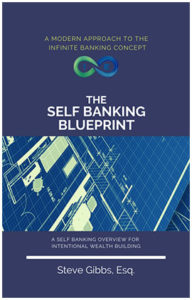
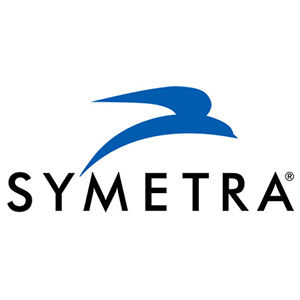
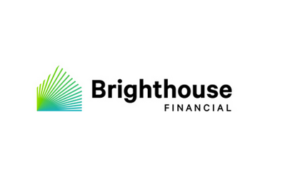

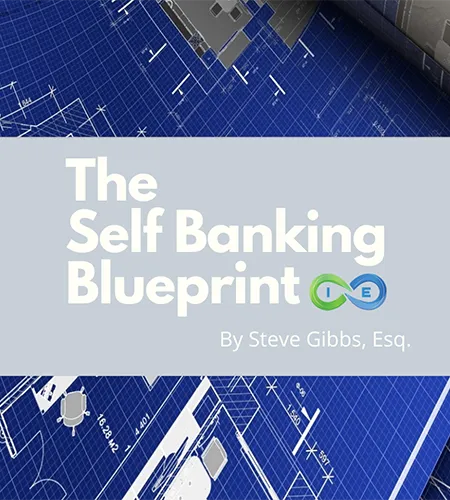
9 comments
Merilda Pederson
I have a 25k face value who life policy with 109oo case value. With cov19 I need some cash. Can I withdraw my cash value without decreaing my face value?
Insurance&Estates
Hello Merilda, unfortunately it’s impossible for us to comment on what you can do with your specific policy. You’ll need to go back to the agent who wrote the policy or the company directly.
Best, Steve Gibbs for I&E
Dr. Charlotte L. Keys
I am interested in learning about BOLI for Family.
Insurance&Estates
Hello Charlotte and thanks for your interest. We suggest you connect with Barry Brooksby at barry@insuranceandestates.com with a contact number and he will reach out to you.
Best, I&E
Wenefredo Asayas Jr
Hi,
When a variable or universal life policy is still on a paying period, can we consider it an asset and where shall we base the amount, is it with the present fund values or the total paid premium..? (During paying period, fund values may be lower than the total paid premium, and dependent to its actual growth)
And is.premium paymemt be my liabilities?
Thanks
Insurance&Estates
Hello, to explore a clear answer to your question, I suggest that you connect with Jason Herring at jason@insuranceandestates.com as he is very experienced in these products.
Best, I&E Pro Team
Steve Risk
Hi Guys, forgot to add the word “not ” in sentence leading into explaining the one exception when LI is not considered an asset. 👍🏼
Insurance&Estates
Thank you. We appreciate your feedback. Correction made.